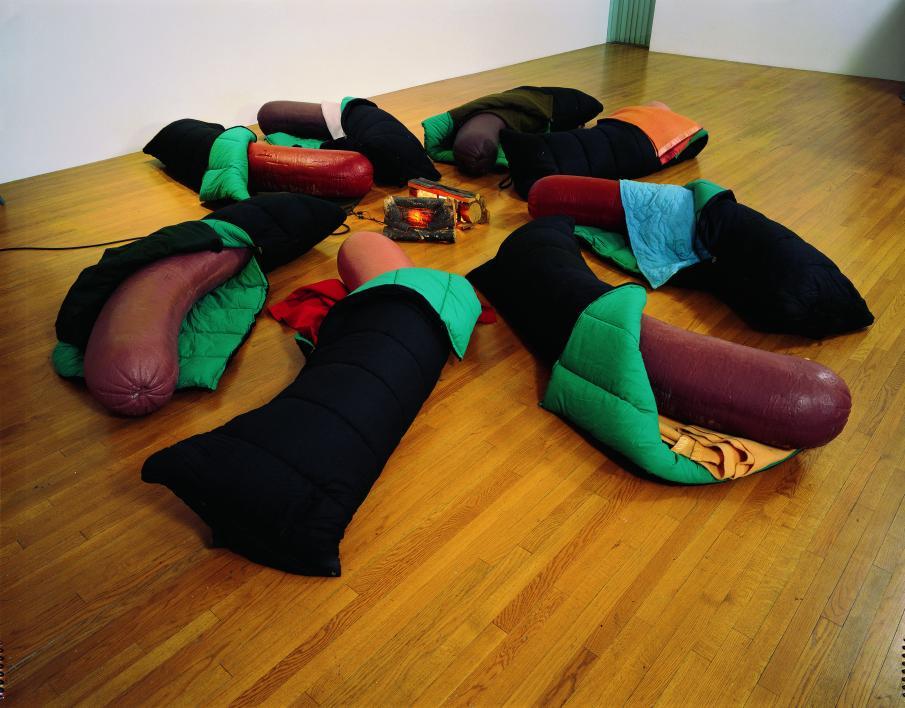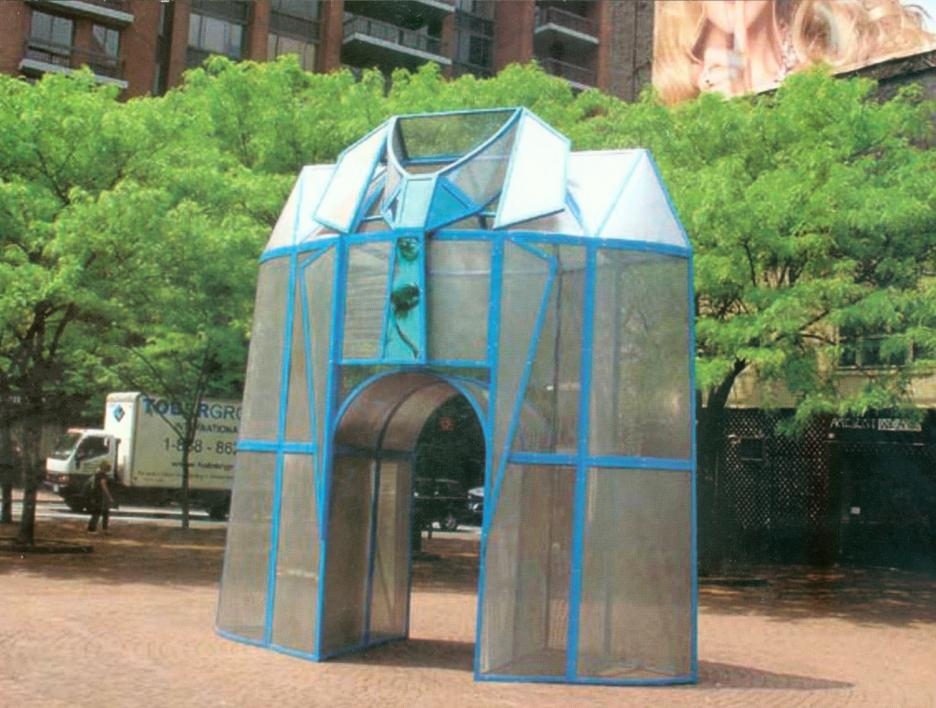Internationally renowned artist Dennis Oppenheim surveys his career at the ASU Art Museum
TEMPE, Ariz. – An exhibition by one of the most innovative and exciting conceptual artists of the late 20th century opens to the public at the Arizona State University Art Museum on Oct. 22. Dennis Oppenheim: Alternate Current presents 40 works that represent key moments of Oppenheim’s lifelong output, showcasing the evolution of his art from 1967 to the present.
Oppenheim’s work, which has included large-scale sculpture, body art, performance art, earth art, video, multi-dimensional installations and even fireworks, will be a visual and cerebral spectacle for visitors. His best-known work in the past two decades is in the realm of public art. One of his public-scale works, Entrance to a Garden, will be installed on Sept. 20 and remain as a gateway to the museum.
Oppenheim has been consistently active and engaged in the production of art, yet never exactly part of a specific movement such as Pop or Minimalism – movements that coincide with his own period of development. Reflecting the exhibition’s title, the artist considers his work to have existed on an alternate current, resisting categorization. He describes himself as a sculptor, an inventor, a performance artist, an earth artist and a social activist, who is attracted to the city as well as the wilderness.
“The exhibition is not only important for what it tells us about Oppenheim but for its insight into art in the second half of the 20th century,” explains museum director and chief curator Marilyn Zeitlin “The work is witty, but with a dark side that is thought-provoking.”
Art experts, scholars and novices alike should enjoy the grandeur and energy of this scene-stealing exhibition, which will run for five months.
For example, in Slow Clap for Satie, an electric keyboard, playing the music of French composer Erik Satie, is attached to a pair of plywood hands that slowly open and close to clap for the music, while potted trees on mechanized platforms waltz in place and ghost-like cast fiberglass human faces hang from trees. In Four Spinning Dancers, electric drills spin buffing disks, becoming a chorus line of dervishes.
In one of the few static pieces in the exhibition, Pear Eating Pumpkin, a huge pear appears to be swallowing a pumpkin. The fruit forms are made of fiberglass and are illuminated within, making the sculpture function as an eccentric lamp.
“Dennis is the quintessential artistic mind. He looks at things in the world and recreates them in 10 different ways,” Zeitlin says of the conceptual nature of Oppenheim’s work.
Oppenheim will be at the opening reception for the exhibition on Oct. 22 from 7-9 p.m.
Born in Electric City, Washington in 1938, Oppenheim lived in Hawaii and California before moving to New York in 1966. He created his first earth work in 1967 and had his first show in New York in 1968. Since his first solo exhibition in Paris in 1969, his work has shown throughout the world. In recent years, he has had solo shows in Washington, Mexico City, Venice, Geneva and Barcelona, and participated in group shows in New York, Paris, and Los Angeles.
Support
The exhibition and related programs are partially funded by the Arizona Commission on the Arts, the City of Tempe (Municipal Arts Commission) and the Evelyn Smith Family Exhibition Fund.
The ASU Art Museum, named “the single most impressive venue for contemporary art in Arizona” by Art in America, is part of the Herberger College of Fine Arts at Arizona State University. The museum is located on the southeast corner of Mill Avenue and 10th Street in Tempe and entry is free. Hours are 10 a.m. - 5 p.m., Tuesday through Saturday and until 9 p.m. Tuesdays during the academic year. For more information, call (480) 965-2787 or visit the museum online at http://asuartmuseum.asu.edu.
Media Contact:
Denise Tanguay
480-965-7144
Denise.tanguay@asu.edu
Mica Matsoff
(480) 965-0478
Mica.Matsoff@asu.edu

